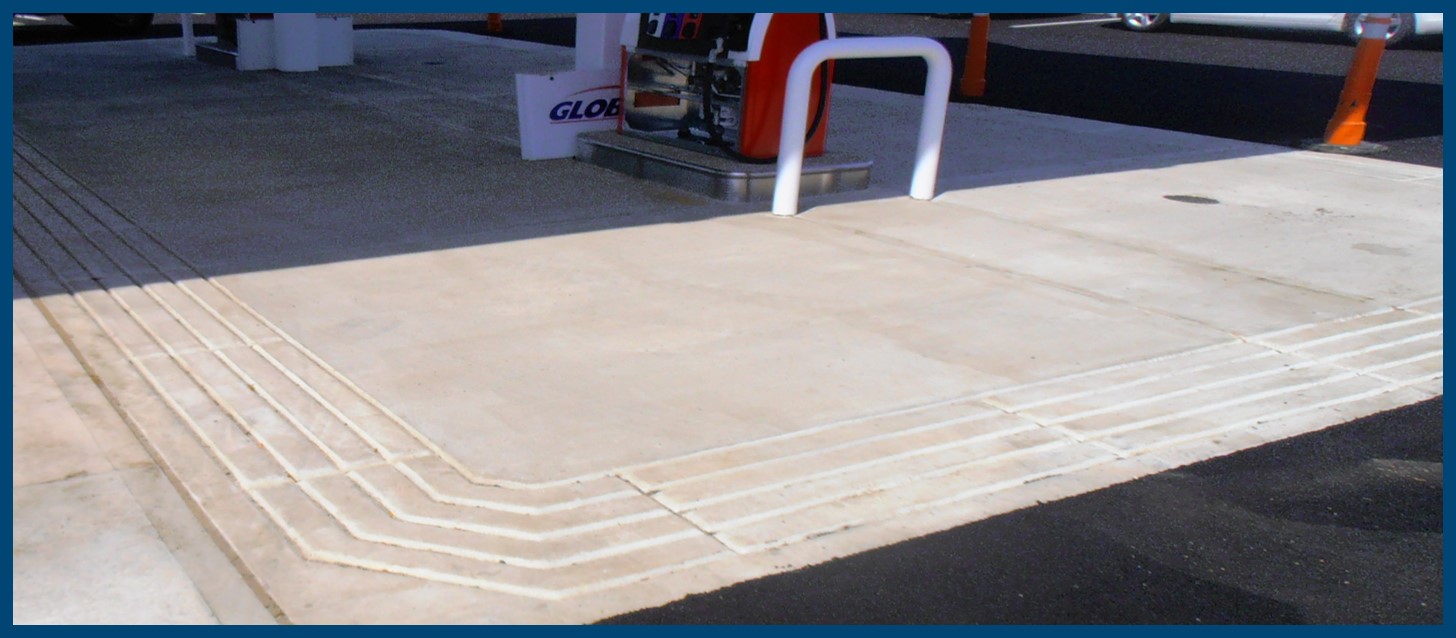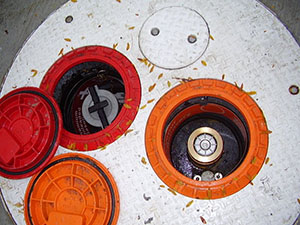Fuel Storage Tanks
Preventing and minimizing contamination of the land and waters of the state from fuel storage tanks.
There are more than 3,000 underground storage tanks (USTs) and more than 4,500 aboveground storage tanks (ASTs) in New Hampshire, storing 195 million gallons of oil and hazardous materials. Releases of product from these tank systems can cause fires and explosions, drinking water contamination, vapors in indoor air, other environmental harm, and infrastructure loss.
The NHDES Oil Compliance Section ensures safe storage and handling of oil and hazardous substances – such as motor fuels, heating oils, lubricating oils, and other petroleum and petroleum-contaminated liquids – by training tank facility operators, providing technical assistance and oversight for engineering of tank systems, and assuring safe operation of existing systems through inspections and technical assistance.
Additionally, the Safetank program provides assistance in replacement of residential heating oil tanks for qualifying individuals. ASTs in New Hampshire are regulated by both NHDES and the New Hampshire Fire Marshal's Office.
For questions related to the storage and regulations of NATURAL GAS and PROPANE, please refer to your local fire officials or building code inspector. These substances are not regulated as “oil” per NH RSA 146-A:2, III (NH RSA 146-C:1, XII.).
Resources
Related Content
Regulating Underground Storage Tanks (USTs)

Spill containment is required on UST systems
For any UST system installed prior to April 22, 1997, or that otherwise does not have existing spill containment at stage I system connections, the owner shall install spill containment meeting the requirements of (c), above, at stage I system connections no later than October 13, 2021. Follow the link below to Env-Or 405.05(f) for full regulation details.

Dispensing pad requirements for UST systems
For any UST system installed prior to February 3, 2005, that does not have an existing concrete dispensing pad, the owner shall install a dispensing pad meeting the requirements of (a) and (b), above, no later than October 13, 2021. Follow the link below to ENV-Or 405.07(g) for full regulation details

Containment sump requirements on UST systems
With the exception of UST systems containing heating oil for on-premise heating use, and subject to (c) and (d), below, all containment sumps shall be tested for tightness as specified in Env-Or 406.05 through Env-Or 406.08 no later than October 13, 2021, and triennially thereafter. Follow the link below to Env-Or 406.14(b) for full regulation details.
Regulating Aboveground Storage Tanks (ASTs)
 These rules apply to facilities with a single AST system having a capacity greater than 660 gallons, or facilities with two or more ASTs that have a total storage capacity greater than 1,320 gallons. (Note: ASTs with a combined capacity of 1,320 gallons or less storing fuel oil used only to heat an on-premise structure are exempt. This includes home heating oil tanks.) Follow the link below to Env-Or 301.02 for full regulation details.
These rules apply to facilities with a single AST system having a capacity greater than 660 gallons, or facilities with two or more ASTs that have a total storage capacity greater than 1,320 gallons. (Note: ASTs with a combined capacity of 1,320 gallons or less storing fuel oil used only to heat an on-premise structure are exempt. This includes home heating oil tanks.) Follow the link below to Env-Or 301.02 for full regulation details.
See Administrative Rule Env-Or 300
 Spill Prevention Control and Countermeasure Planning (SPCC)
Spill Prevention Control and Countermeasure Planning (SPCC)
The owner of an AST facility that is subject to this chapter shall prepare and implement a Spill Prevention, Control, and Countermeasure (SPCC) Plan to establish release prevention measures and effective response procedures for releases from the AST system(s) at the facility. The SPCC Plan is required for storage capacity greater than 1,320 gallons, counting any petroleum containers 55 gallons and greater. A facility can write up their own SPCC Plan if their combined storage capacity is 5,000 gallons or less and gasoline storage is no more than 660 gallons. Facilities over 5,000 gallons or having greater than 660 gallons of gasoline storage need to be certified by a New Hampshire P.E. The SPCC Plan must be reviewed, updated, if necessary, and resubmitted to the department at least once every 5 years. Facilities fueling watercraft are required to have an SPCC Plan regardless of fuel storage capacity. Follow the link below to Env-Or 306.02 for full regulation details.
 The owner of an AST facility must conduct monthly visual inspection as defined within the SPCC Plan. Not less than once in each calendar year the owner of an AST facility shall test the AST system components including but not limited to: overfill alarms, system sensors, automatic fill shutoff device and interstitial alarm sensor. All monthly and annual testing results must be submitted to NHDES. Follow the link below to Env-Or 306.12 for full regulation details.
The owner of an AST facility must conduct monthly visual inspection as defined within the SPCC Plan. Not less than once in each calendar year the owner of an AST facility shall test the AST system components including but not limited to: overfill alarms, system sensors, automatic fill shutoff device and interstitial alarm sensor. All monthly and annual testing results must be submitted to NHDES. Follow the link below to Env-Or 306.12 for full regulation details.
See administrative Rule Env-Or 300
Vapor Recovery
 Rules and standards have been established for design, installation, operation, maintenance and monitoring of facilities designed to not only reduce air pollution but also conserve gasoline that would otherwise be lost into the air. Monthly and annual inspections are required by administrative rules.
Rules and standards have been established for design, installation, operation, maintenance and monitoring of facilities designed to not only reduce air pollution but also conserve gasoline that would otherwise be lost into the air. Monthly and annual inspections are required by administrative rules.
 The owner or operator shall document each monthly maintenance inspection. During monthly inspection, the owner or operator shall; (1) check all vent risers for damage, (2) check each PV vent cap for missing parts or damage, (3) remove any water or debris from spill buckets, (4) check each coaxial fill adaptor cap, 2-point fill adaptor cap, dry break cap for gasket and tightness, (5) replace missing or damaged gaskets and caps.
The owner or operator shall document each monthly maintenance inspection. During monthly inspection, the owner or operator shall; (1) check all vent risers for damage, (2) check each PV vent cap for missing parts or damage, (3) remove any water or debris from spill buckets, (4) check each coaxial fill adaptor cap, 2-point fill adaptor cap, dry break cap for gasket and tightness, (5) replace missing or damaged gaskets and caps.
 The owner or operator shall document each annual maintenance inspection, including all findings and repairs made. During each annual inspection, the owner or operator shall: (1) Perform all inspections and maintenance specified in Env-Or 504.05 for monthly inspections, (2) replace or permanently plug each drain valve, (3) verify adaptor caps and dust covers do not contact overlaying access covers, (4) ensure that the submerged fill tube has the clearance specified in Env-Or 503.01(b).
The owner or operator shall document each annual maintenance inspection, including all findings and repairs made. During each annual inspection, the owner or operator shall: (1) Perform all inspections and maintenance specified in Env-Or 504.05 for monthly inspections, (2) replace or permanently plug each drain valve, (3) verify adaptor caps and dust covers do not contact overlaying access covers, (4) ensure that the submerged fill tube has the clearance specified in Env-Or 503.01(b).









